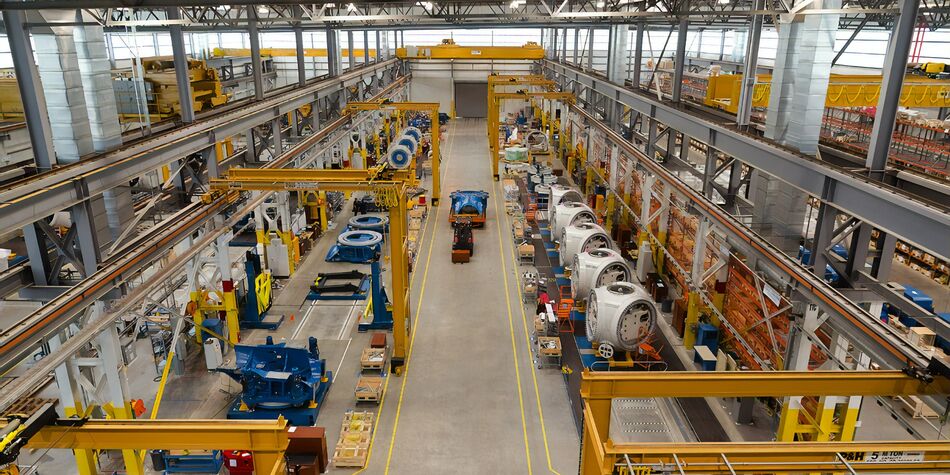QA Automation: Why You Should Constantly Check Your Test Strategy
While some startups underestimate the importance of software testing and quality assurance (QA) automation, it is one of the most crucial stages of software development. In this article, we will explain the importance of automated software testing, highlight best practices and share our approach for this process.
What Is Automation Testing?
Benefits of Automation Testing: Manual Testing vs Automation Testing
Manual Testing vs Automated Testing: When You Need to Automate or DIY
Automated Test Frameworks
Types of Automated Testing
How to Choose Automation Testing Tools
Test Automation Strategy: How to Upgrade the QA Automation
Instead of a Conclusion, a Case Study
WHAT IS AUTOMATION TESTING?
What is test automation? Automation testing is a practice that allows you to run your testing process in an automated or semi-automated mode. Considering the high competition in most industries, the advanced practices for streamlined application creation like Agile development and DevOps, and the high expectations of users, testing your software automatically is essential.
BENEFITS OF AUTOMATION TESTING: MANUAL TESTING VS AUTOMATION TESTING
Just like any other process automation, quality assurance automation reduces the time and effort of the QA team by making sure that each part of the application is programmed correctly. It also provides insights to use in the next iteration.
Below are the main benefits of automation testing:
Reusability. QA specialists develop dozens of scenarios and make sure each works as planned. QA automation allows you to reuse these scripts for new parts of the application.
Parallel testing. When there is a need to test how the application works across different platforms and devices, QA automation allows you to run test scripts simultaneously, which reduces the time needed to test each platform and/or device.
Clear reports. Most advanced automation testing tools provide the opportunity to get clear reports and identify mistakes and weak points that should be taken into account when developing a new test automation strategy.
Eliminating test errors. The main task of automated and manual QA is to make sure no mistakes were made during code creation. QA automation allows you to ensure that everything is clear in the process of testing itself.
MANUAL TESTING VS AUTOMATED TESTING: WHEN YOU NEED TO AUTOMATE OR DIY
While automated testing is a more advanced approach to software quality assurance, manual testing is still needed. As a rule, the testing process begins with manual testing to find out which areas to test automatically. Manual testing is also essential for crucial processes. You may check them with the help of a test automation framework.
Thus, there is no need to choose between manual vs automation testing. Both of these approaches are important to make sure your software will perform well, however, you need to be smart to get the most benefit from their combination.
AUTOMATED TEST FRAMEWORKS
There are several approaches to QA automation. They are called automation test frameworks or strategies. Each of them allows you to create different scripts, use and reuse them according to the specifics of the app, user expectations, and business needs, and then take a look at your software from several different angles.
Record and playback testing. It is one of the oldest approaches to test development. Its essence is quite simple and clear from its name — you need to record several scripts of user actions, test, and reuse them in the next iteration.
Enhanced record and playback testing. This approach evolved from the previous one. It allows you to test more scripts using more parameters.
Data-driven framework automated testing. If the testing environment is flexible and changing (for example, your users can access your app from different devices and platforms), data-driven tests can cover diversified test cases depending on the current environment.
Action-driven framework automated testing. This automation test framework is also called a keyword-driven approach. It is used when you need to test an app depending on the actions the user performs. In this case, the testing environment is the same, but the set of operations can be large and diversified.
Hybrid keyword/Data-driven framework automated testing. This approach also evolved from the previous one. It allows you to combine two frameworks in one advanced test strategy. With its help, you can reuse scripts to test user actions in other environments.
Robotic process automation testing. Robotic process automation is the most innovative approach to quality assurance. In this case, you use a fully robotized solution to test your scripts and cover the automated test frameworks discussed above.
Manual and automated tests integration. It is the most eminent approach to QA automation since it opens up the benefits of automated and manual testing at the same time.
Also read: The most popular and practice-proven software testing estimation techniques
TYPES OF AUTOMATED TESTING
Automation testing framework and automated test type are sometimes considered the same thing, however, there is a difference. While the test type states what test suits can be automated, a framework is an approach to designing the test itself.
Below are three types of automated testing.
Based on the type of testing. This type of testing allows you to create functional and non-functional tests. While the first is related to business logic, the second covers performance, reliability, security, and other issues.
Based on the phase of testing. You can create unit tests right after each software unit is tested. And you make software units according to the test-driven development approach, run application program interface (API) tests during the integration phase, and user interface (UI) tests during the test execution phase.
Based on the type of tests. Depending on the type of test, you can run user acceptance tests, unit tests, security, performance and regression tests, UI, API, and smoke tests.
Accelerating Time to Market Through QA Automation
HOW TO CHOOSE AUTOMATION TESTING TOOLS
Due to the need for rapid software development, the modern market for software testing automation tools is quite diverse. That’s why choosing the automated testing tools to fit your project specifics can be challenging. Here is what you need to do:
Read your software specification requirements
It is the document that highlights the most vital requirements of your future software. To choose the right testing automation tool, get back to your SSR and discover what processes and operations are most important for your software to work as planned.
Identify high-priority testing areas
At this step, you need to find out which areas need to be tested first, which are subject to automated testing (these are the repeated and time-consuming non-crucial processes) and which are better to be checked manually.
Choose the tool that fits your project specifics
There are a lot of automation testing services to choose from. The best strategy, in this case, is to pay attention to the tools that come with an advanced set of features, covering the necessities of manual, automated testing and robotic process automation (RPA). For example, ZapTest may be a good solution.
Listen to the opinion of your QA team
Follow the advice of those who already have experience dealing with testing tools. If you outsource your QA process, your remote QA team will already have well-established practices in software testing, and you can discuss whether they work for your project.
TEST AUTOMATION STRATEGY: HOW TO UPGRADE THE QA AUTOMATION
Decide what to automate. When getting started with each new testing strategy, make sure you have identified the areas that need to be tested with the help of manual testing vs automation testing. QA consulting services will be quite helpful for this task.
Prioritize tasks. The business logic of your app always comes first, followed by user acceptance and user journey testing. Next, you need to make sure if there are no bugs in the code, the application can cope with planned loads, and there are no security vulnerabilities.
Prepare test cases and scenarios. At this stage, you need to choose a framework that suits your project specifics and create test cases and scenarios according to the framework chosen.
Get ready to learn from mistakes. The quality assurance process is also a stage to learn from mistakes. Real-time reporting provided by most test automation tools will help you find weak points and effective tactics to avoid them in the future.
Be ready to change. Since most apps enter a dynamic market that tends to change and fluctuate, the environment always has the potential to change your test approach. Thus, your testing strategy should be flexible and ready for transformation in response to the changing user preferences.
More on the Topic: Quality Assurance in the product development cycle
INSTEAD OF A CONCLUSION, A CASE STUDY
The Cprime Studios QA team has gathered a lot of practice-proven hacks when it comes to software testing. For example, we are proud to contribute to MuleSoft, LLC’s Agile transformation. This Software as a Service (SaaS) provider had to strengthen their tech team with remote testing specialists to launch their products faster, and we helped them with this task. The core challenge we faced was that there was a waterfall-like collaboration between the development and QA teams.
It is not the best choice in SaaS development since it deprives teams of flexibility, responsiveness, and shared responsibility for the delivered result. Instead, we suggested establishing better collaboration and communication practices between the two teams. That resulted in accelerating the time-to-market from several months to just two weeks.
They also had quite a lot of manual testing tasks that complicated the regression and reverse compatibility with legacy parts of the platform, so there was a clear need to automate some of them.
With the help of QA automation, we managed to speed up the release of new features, unlock the opportunity to get faster feedback from the market, and better fit the customer’s expectations utilizing continuous development, integration, and deployment processes.
Ready to boost your software development process, eliminate errors and reduce time and costs? Reach out to us to get started!



